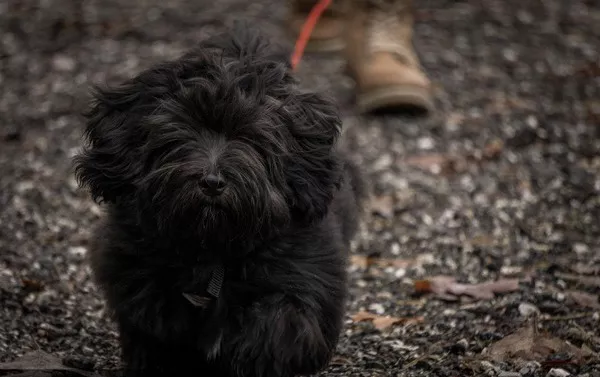The American Foxhound is a beloved and historically significant breed of dog that has played a pivotal role in American culture, particularly in hunting. Known for their endurance, intelligence, and keen sense of smell, these dogs have gained popularity not just as working animals but also as loyal companions. In this article, we will explore the different types of American Foxhounds, their history, characteristics, and the essential traits that define this remarkable breed.
1. What Is the American Foxhound
The American Foxhound is a breed of dog developed in the United States, specifically for hunting foxes. It is a cousin to the English Foxhound, but it has developed distinct traits over time. These dogs were bred to be fast, resilient, and able to work for long periods in a variety of environments. They are primarily known for their use in fox hunting but have also adapted well to family life when raised in the right environment.
American Foxhounds are typically gentle, friendly dogs, known for their sociable nature and their ability to form strong bonds with both their human companions and other dogs. Although their primary role has been as hunting dogs, they also make excellent pets for active families and individuals.
2. History of the American Foxhound
The development of the American Foxhound began in the 1600s when early settlers brought hounds from England to the New World. These English Foxhounds were bred with various other dogs, including French hounds and dogs native to the Americas, to create a breed suited to the specific needs of American hunters. The goal was to produce a hound that could work efficiently in the vast American landscape, particularly in the dense forests and open fields where foxes lived.
The American Foxhound quickly became an essential part of American hunting culture, particularly in the southern and eastern parts of the United States. Its primary role was to track and chase foxes, often for long distances, using their incredible stamina and powerful scenting ability. Over time, breeders in the U.S. refined the breed, focusing on traits such as speed, endurance, and temperament. Today, the American Foxhound is still used in hunting but is also popular as a family pet due to its gentle nature.
3. The Different Types of American Foxhounds
While there is only one breed of American Foxhound, variations do exist based on the specific traits and characteristics that different hunting lines have prioritized over time. The differences among these variations often relate to size, temperament, and hunting abilities. These differences can be seen in three primary categories: the Show-type American Foxhound, the Field-type American Foxhound, and the Working-type American Foxhound.
Show-type American Foxhound
The Show-type American Foxhound is the version of the breed that is most commonly seen in dog shows and is recognized by major kennel clubs, including the American Kennel Club (AKC). These dogs are bred to meet specific standards in appearance, temperament, and overall health, and they tend to be slightly more refined in structure than their working counterparts.
Appearance: Show-type American Foxhounds are typically medium-sized dogs with a well-balanced and athletic build. They should have a long, muscular body, a square-shaped muzzle, and large, expressive eyes. Their coat is short and dense, typically coming in a variety of colors, including tri-color (black, white, and tan), bi-color (white and tan), or solid colors like white or tan.
Temperament: These Foxhounds are generally gentle and sociable dogs. They are known for being friendly with both their family and strangers. While they may have a strong prey drive due to their hunting background, they are not typically aggressive. They are also quite intelligent, which makes them relatively easy to train, although their independent nature can sometimes present challenges in obedience training.
Hunting Ability: The Show-type Foxhound, though bred for appearance, still retains many of the traits necessary for effective hunting. However, they are less likely to be as driven to work continuously as their Field-type counterparts. Instead, they may prefer a more leisurely pace in hunting scenarios. They are also more suited to being house pets and companions than working dogs.
Field-type American Foxhound
The Field-type American Foxhound is bred specifically for hunting. These dogs are often considered to be the “workhorses” of the breed. They are bred for endurance, strength, and an unparalleled ability to track and chase foxes. The Field-type dogs tend to be more energetic, independent, and sometimes harder to manage in a domestic environment, but they excel in the field.
Appearance: Field-type Foxhounds are typically leaner than their Show-type counterparts, with a more streamlined appearance. They have longer legs, a narrower head, and a body that is optimized for speed and stamina. The Field-type American Foxhound’s coat is similar to that of the Show-type, but they may have a more weathered appearance due to their constant exposure to the outdoors.
Temperament: These dogs are bred for work, and they tend to be more driven than Show-type Foxhounds. While they are still friendly and loyal, they are often more independent and may show a greater inclination to chase small animals due to their strong prey drive. Field-type Foxhounds are highly intelligent but can be challenging to train due to their independent streak. They require firm, consistent training and need a lot of mental and physical stimulation.
Hunting Ability: Field-type American Foxhounds are bred for intense endurance and stamina. They can run for hours, tracking scents and chasing their prey over long distances. They are highly skilled in tracking, and their sense of smell is second to none. These dogs are perfect for working as hunting partners or in a pack, where they will follow a scent trail, working in tandem with other dogs.
Working-type American Foxhound
The Working-type American Foxhound lies somewhere between the Show-type and the Field-type. They are bred for more practical, day-to-day hunting and are often used by professional hunters who rely on their skill in the field. Working-type Foxhounds are generally less refined than Show-type Foxhounds but have the strength, speed, and stamina necessary for the work they do.
Appearance: These dogs tend to be similar in size and build to the Field-type, but they may not always meet the exact standards required for show. Their bodies are muscular, with a slightly bulkier appearance than the Field-type. The coat is short and dense, and like the other types, comes in a variety of colors.
Temperament: Working-type American Foxhounds are very much like their Field-type cousins in terms of temperament. They are highly energetic and driven, with a strong desire to work. While they may be affectionate with their owners, they are much more focused on their tasks and less interested in being lapdogs or companions for sedentary lifestyles. They are also quite intelligent but can be independent and may need more assertive training.
Hunting Ability: The Working-type American Foxhound excels in the field and is an outstanding hunting companion. These dogs are trained to track and chase prey with great focus and endurance. They can work for hours on end, often covering vast distances. Their ability to follow scent trails and stay focused on the hunt makes them invaluable to hunters.
4. General Characteristics of the American Foxhound
While there are variations between the Show-type, Field-type, and Working-type American Foxhounds, there are some common characteristics that are shared by all of them.
Size and Build
The American Foxhound is a medium-sized dog, typically standing between 21 to 25 inches at the shoulder and weighing between 40 to 65 pounds. They have a lean, athletic build, with a well-defined muscular structure that reflects their hunting background. They are not overly large, but they are strong and capable of enduring long periods of physical activity.
Coat and Colors
The coat of the American Foxhound is short, dense, and weather-resistant. It comes in a variety of colors, including tri-color (black, white, and tan), bi-color (white and tan), and solid colors such as white or tan. The coat requires minimal grooming, though it should be brushed regularly to keep it looking its best.
Temperament
American Foxhounds are generally friendly, good-natured, and sociable dogs. They tend to get along well with other dogs and pets, particularly if raised together. While they may be independent, they are loyal to their families and enjoy spending time with them. They are also known for being gentle with children, making them a great choice for families with young kids.
Exercise Needs
American Foxhounds are very active dogs. They require a lot of exercise to stay healthy and happy. Whether it’s a long walk, run, or play session, they thrive on physical activity. For this reason, they may not be the best choice for apartment living unless they have access to an outdoor area for exercise. A lack of proper exercise can lead to behavioral problems, such as digging or excessive barking.
Health
The American Foxhound is generally a healthy breed with a lifespan of around 11 to 13 years. However, like all breeds, they are susceptible to certain health conditions, such as hip dysplasia, ear infections, and respiratory issues due to their active nature. Regular vet check-ups, a balanced diet, and proper exercise are essential for keeping them in top condition.
Conclusion
The American Foxhound is a versatile and adaptable breed with a rich history and a variety of different types suited to different needs. Whether you’re interested in a show dog, a hunting companion, or a working partner, the American Foxhound has something to offer. While the Show-type Foxhound is more suited for family life and competitions, the Field and Working types excel in their roles as skilled hunters. Regardless of the type, all American Foxhounds are loyal, affectionate, and energetic dogs that can make excellent pets and companions for those who are willing to meet their exercise and mental stimulation needs.
Choosing the right type of American Foxhound depends largely on your lifestyle and what you’re looking for in a dog. If you’re an active individual or family with a love for the outdoors, a Field or Working-type American Foxhound may be the ideal companion. If you’re looking for a more relaxed dog that can thrive in an urban environment, a Show-type Foxhound might be the perfect fit. Regardless of which type you choose, you’re sure to have a loyal and hardworking companion by your side.
Related Topics:





















